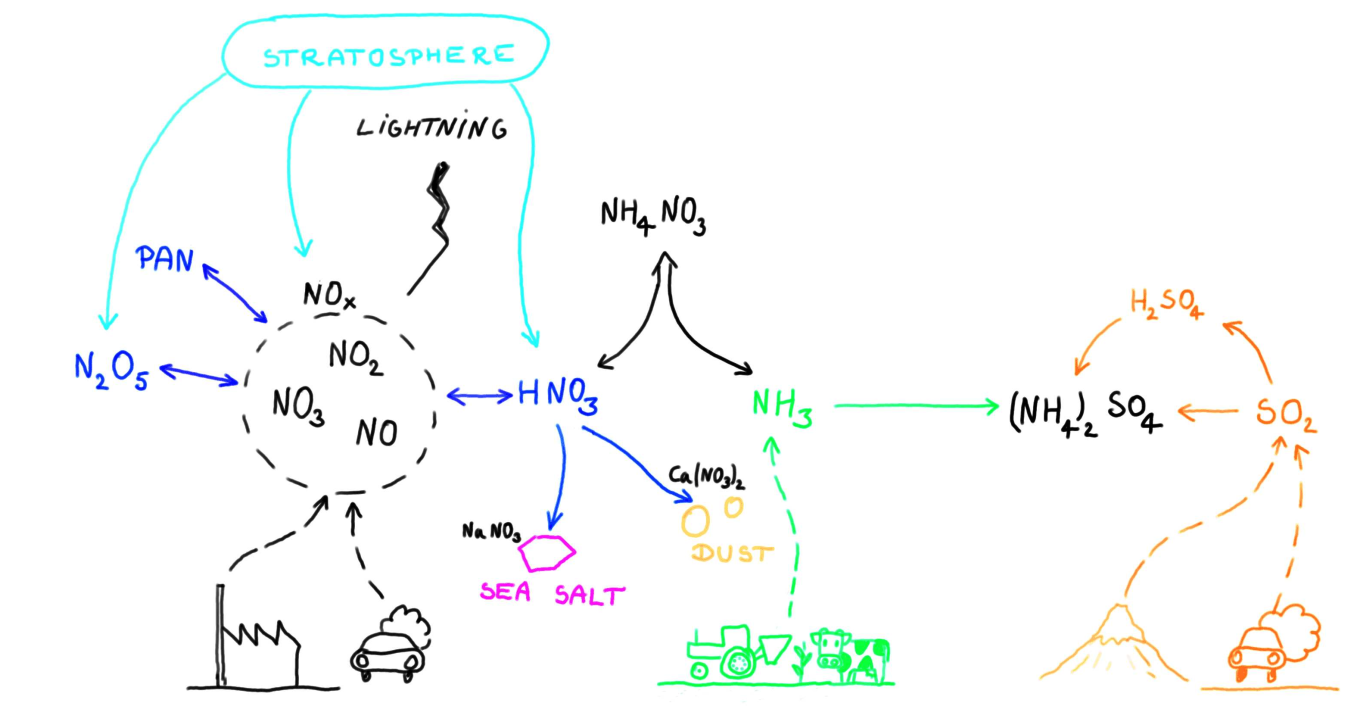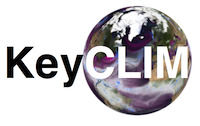WP5 's overarching objective is to quantify the changes in land and ocean biogeochemical cycles invoked by Arctic warming and compare these to future anthropogenic atmospheric composition change. Secondary objectives: (1) Implement in NorESM a consistent air-sea-exchange scheme for climate relevant gases and couple to an improved aerosol and gas-phase chemistry scheme; (2) Explore feedback processes involving these emissions and validate with current observational data sets.
Interactive emissions and improved atmospheric chemistry
Natural biogenic emissions of climate relevant gases can have an impact on the composition and radiative balance of the atmosphere (such as DMS, isoprene, monoterpene, dust, sea-salt, methane). In a changing climate, the natural emission strengths might modify, and induce a climate feedback (amplifying or reducing the original climate change). Such a change in emission strength might happen due to changing atmospheric conditions like surface temperature, precipitation, wind speed, and atmospheric circulation, but, for specific species, also due to climate change-induced changes in the (deeper) ocean. Also, in the Arctic region, changing sea-ice conditions (e.g., retreating sea-ice edge, or ice-free summer) will possibly have a considerable impact on the natural biogenic emissions.
In this work package there are three main tasks. These are i) the extension of the description of natural emissions in NorESM2, ii) the addition of ozone and halogen chemistry in the atmosphere component of NorESM2, and iii) the identification and quantification of possible climate feedbacks.
In the first task, on extending the description of natural emissions, there is a strong focus on brominated very-short lived species (VSLS, lifetime < 0.5 yr) which are naturally emitted from the ocean, impacting the ozone budget in the atmosphere (due to catalytic destruction) and thus radiation and climate. We work on the introduction of bromoform (CHBr3, which is a brominated VSLS) in iHAMMOC (the ocean biogeochemistry component of NorESM2), and the implementation of the exchange of bromoform between ocean and atmosphere.
In the second task, we focus on the extension of the atmospheric chemistry in NorESM2 to describe the evolution in the atmosphere of newly emitted species and their radiative impact.. This will allow us to describe the impact of VSLS emissions on ozone, and its consequent effects on composition, radiation and circulation changes. Up to now NorESM2 contained a simplified atmospheric chemistry scheme only focussing on gas-phase species contributing to the formation of secondary aerosol, but was lacking an interactive description of tropospheric and stratospheric ozone. The extended chemistry scheme in NorESM2 will also allow the model to describe the impact of anthropogenic ozone-precursor emissions (NOx, CO, NMVOCs).
In the third task, we will analyse whether climate relevant gases emitted from the ocean might play a role as a climate feedback, and the improved NorESM2 model will be used in dedicated experiments (e.g., 4xCO2 experiments to simulate a warmer climate, or simulations with an ice-free Arctic). This will allow us to quantify the feedback strength of natural biogenic emissions. The model runs will be compared with available observations.





